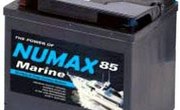
A motorcycle ignition consists of components that produce spark for the engine's spark plugs. The components are linked by wiring circuits that receive power from a source, which is either a magneto or 12-volt battery. An ignition switch turns the system on and off. Motorcycle ignitions vary from one manufacturer to the next, but all systems work on the same principle. The primary requirements for wiring an ignition system are knowledge of electrical wiring connections and the wiring schematic for your motorcycle. The latter is provided in your service manual. You wire a motorcycle ignition with the components installed.
Items you will need
Service manual (year and model of your motorcycle)
Insulated electrical wire (colors and gauge specified in your manual)
Electrical wiring tools
Wiring connectors
Plastic wire shield
Nylon ties
Setting Up
Look at the electrical schematic in your service manual and find the diagram of the ignition switch or key switch. It should be in the upper portion of the schematic.
Identify the terminal labeled "Battery" among the connections shown on the ignition switch diagram. Follow the path of the battery wire from the switch to the next connection point. If your motorcycle has a starter, the next point should be the solenoid. Otherwise, the next point is most likely a rectifier or voltage regulator.
Continue to follow the path of the battery-related wires. Become familiar with the connections by locating each one on the particular components on your motorcycle. This circuit is the power source for the ignition system.
Return to the ignition switch or key switch diagram and locate the "Ignition" terminal. Follow the path of one or more wires from the ignition terminal. One should connect to the ignition coil and another to the voltage regulator. Other wires connect to the "Accessory" circuit that powers the lights and horn.
Make a diagram of the wiring circuits showing path of the wires from each connection point to the components. Label each wire in your diagram with the color given in the schematic. The diagram is your guide and the wiring schematic is your backup to double check things as you go.
Wiring the Ignition
Organize the spools or coils of colored insulated wire on a workbench. Refer to your diagram and determine which colors are used for the circuit that begins at the battery terminal on the ignition switch. Do the same for the wires leading from the ignition terminal on the switch.
Measure and cut lengths of the specified color wires for the circuits leading from the battery terminal and the ignition terminal to each component. Cut the shorter pieces 6 inches longer than your measurements. Cut the longer pieces 12 inches longer. This gives you enough to attach wire connectors and fasten longer runs to the motorcycle frame.
Cut lengths of plastic wire shield for the longer wire runs. You can combine the runs to some components in one length of wire shield. The color codes tell you which wires connect to a particular terminal on each component. Label or mark the wires if you like.
Strip one end of all wires and attach the appropriate connectors to each. Start at the ignition switch, making the connections as shown in your diagram. Fasten the wire shield to the motorcycle frame with nylon ties as you go.
Refer to your diagram and the wiring schematic in the service manual. You can cut the wires to length and attach the remaining connectors once you are confident with the ignition wiring. Make the final connections at all the ignition components.
Tips
- Use a voltage tester to check the continuity in the wiring circuits before connecting the battery leads.
References
Tips
- Use a voltage tester to check the continuity in the wiring circuits before connecting the battery leads.
Writer Bio
William Machin began work in construction at the age of 15, while still in high school. In 35 years, he's gained expertise in all phases of residential construction, retrofit and remodeling. His hobbies include horses, motorcycles, road racing and sport fishing. He studied architecture at Taft Junior College.



